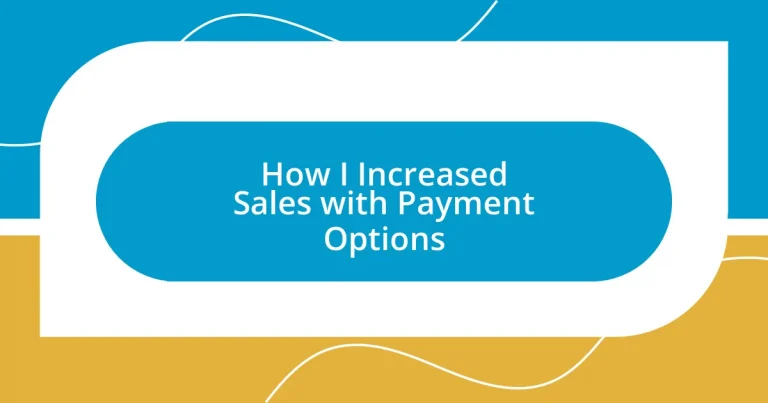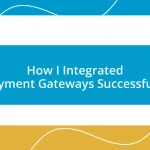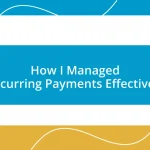Key takeaways:
- Understanding and integrating diverse payment options, such as digital wallets and installment plans, significantly enhance customer satisfaction and improve sales.
- Analyzing customer preferences and feedback leads to tailored payment strategies, fostering better connections and increased loyalty.
- Monitoring sales performance in relation to payment options allows businesses to proactively adapt strategies and meet evolving customer needs effectively.
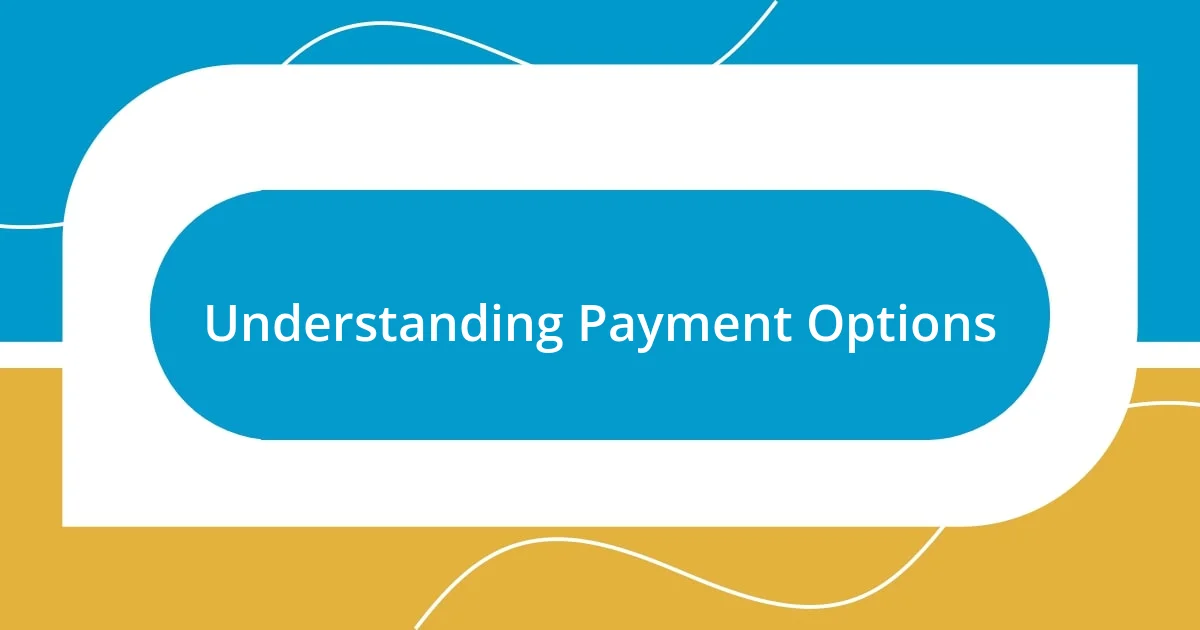
Understanding Payment Options
When I first ventured into offering various payment options, I felt a mix of excitement and anxiety. I knew that understanding what my customers preferred was crucial, and I didn’t want to miss the opportunity to cater to their needs. Did you know that flexible payment methods can significantly enhance customer satisfaction? It’s all about making their shopping experience as seamless as possible.
As I began to explore different payment options, I discovered that each method speaks to a different type of customer. For instance, I noticed some clients loved the convenience of digital wallets, while others preferred the familiarity of credit cards. Can you recall the last time you hesitated to complete a purchase due to limited payment choices? That moment alone can be the difference between a completed sale and a lost opportunity.
Integrating payment options like installment plans was a game-changer for me. I remember a customer who initially put a high-ticket item in their cart but left after seeing the total cost. When I introduced an installment option, not only did I see them return to complete the purchase, but they also expressed gratitude for making it accessible. This solidified my belief that understanding payment options is not just about transactions—it’s about connecting with customers and meeting them where they are.
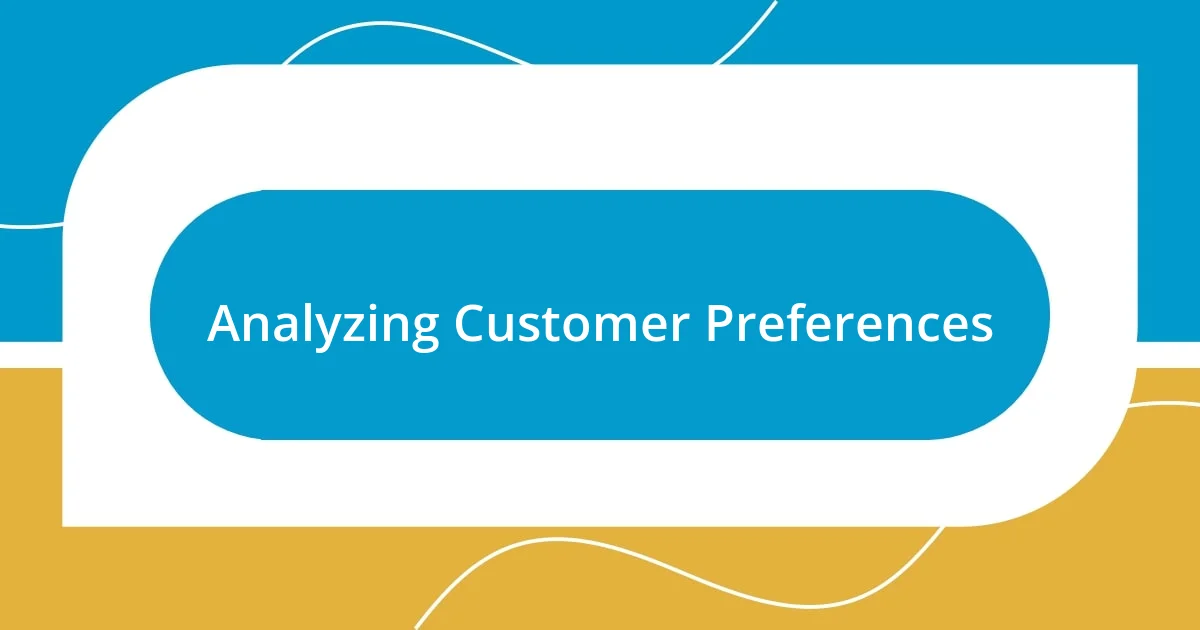
Analyzing Customer Preferences
Analyzing customer preferences is essential when deciding on payment options. There was a time when I ran a small online shop, and I was genuinely surprised by the varied responses to my payment options. A simple survey revealed that my audience favored split payments over traditional methods. It got me thinking—what do customers really want?
Through direct conversations with my customers, I discovered that many appreciated the safety of familiar payment methods but were also intrigued by new technology. One customer mentioned feeling anxious about sharing their banking details online, yet they valued the ease of one-click purchasing. This insight transformed how I approached payment options, ensuring I prioritized both security and ease of use to maintain trust while meeting their needs.
I also found that offering localized payment methods helped me connect better with my audience. By introducing regional payment platforms that fit my diverse customer base, I noticed a significant uptick in completed purchases. I felt a rush of satisfaction hearing from customers who said, “Finally, I can pay the way I feel comfortable!” That’s what it’s all about—a genuine connection that leads to better sales.
| Payment Method | Customer Preference |
|---|---|
| Digital Wallets | High |
| Credit/Debit Cards | Moderate |
| Installment Plans | High |
| Regional Payment Platforms | Varies |
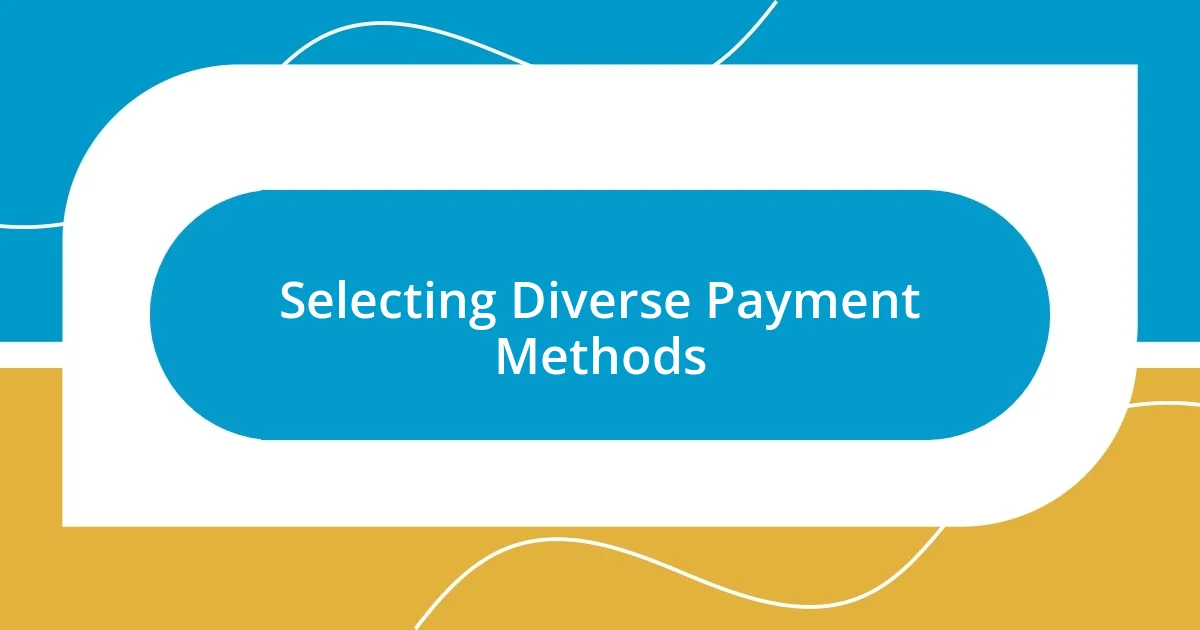
Selecting Diverse Payment Methods
Choosing a range of payment methods wasn’t just a logistical decision; it felt like learning a new language. I remember a time when I hosted a pop-up shop. During one event, a customer expressed frustration that we didn’t accept her preferred payment method. It hit me then: offering diverse payment options isn’t just a feature; it’s about creating a welcoming atmosphere where every customer feels valued and understood.
Here are some diverse payment methods that I’ve successfully integrated:
- Digital Wallets: They’re quick and easy, appealing to tech-savvy shoppers.
- Credit/Debit Cards: A classic choice that most customers trust and prefer.
- Installment Plans: These can help customers manage larger purchases, making products more accessible.
- Local Payment Platforms: Tailoring options like these helps create a sense of community among diverse customer bases.
Every time I added a new method, I could almost feel the shift in customer enthusiasm. It reinforced my belief that adapting payment options is integral to enhancing customer relationships and ultimately driving sales.
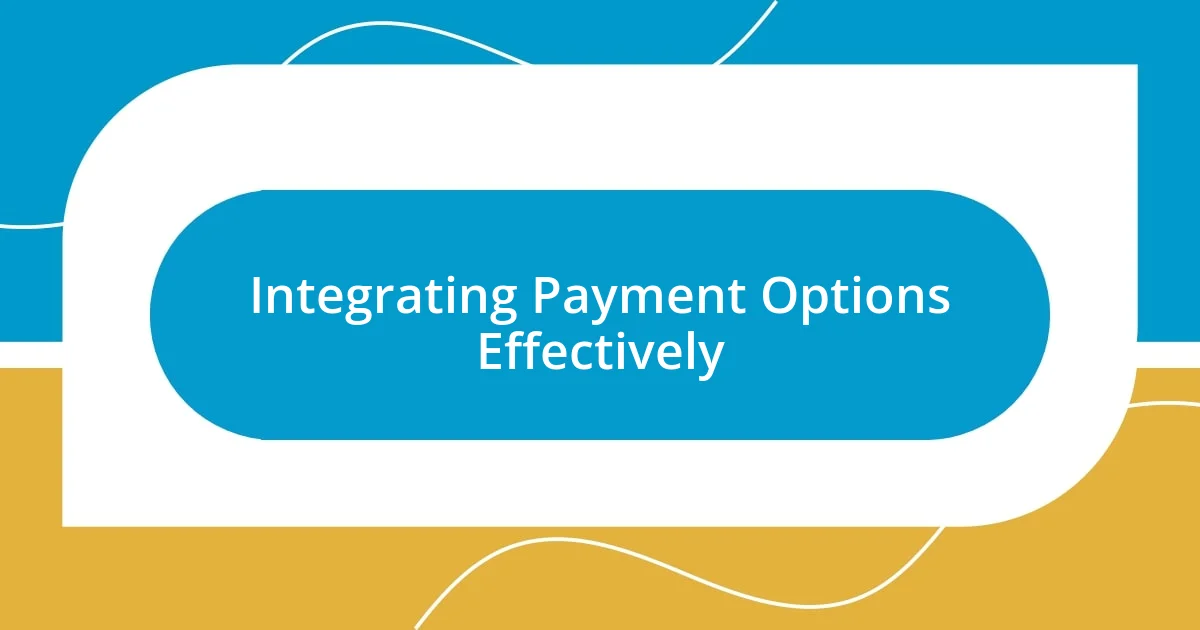
Integrating Payment Options Effectively
Integrating payment options effectively goes beyond merely adding methods; it requires a thoughtful approach to how these options align with customer expectations. I remember a pivotal moment when I decided to incorporate subscription billing for my services. At first, I was nervous about how my customers would react. To my surprise, it turned out that many appreciated having a predictable cost each month rather than a large upfront payment. I wondered: could making transactions easier lead to a stronger customer loyalty?
One of the biggest lessons I learned was about the user experience during checkout. When I simplified my payment process by reducing the number of clicks needed, I saw a noticeable increase in successful transactions. Another time, I launched an A/B test where I compared different layouts for the payment section. The version with clear, enticing visuals that highlighted security features received a much higher conversion rate. It reinforced my belief that clarity and convenience can transform a casual browser into a committed buyer.
Moreover, I found that promoting customizable payment options made the process feel personal. I vividly recall a customer sharing how much they appreciated the option to adjust payment dates to fit their tight budget. Hearing them express relief made me realize that integrating empathy into payment options is just as important as the options themselves. It’s all about putting the customer first and making them feel heard and valued.
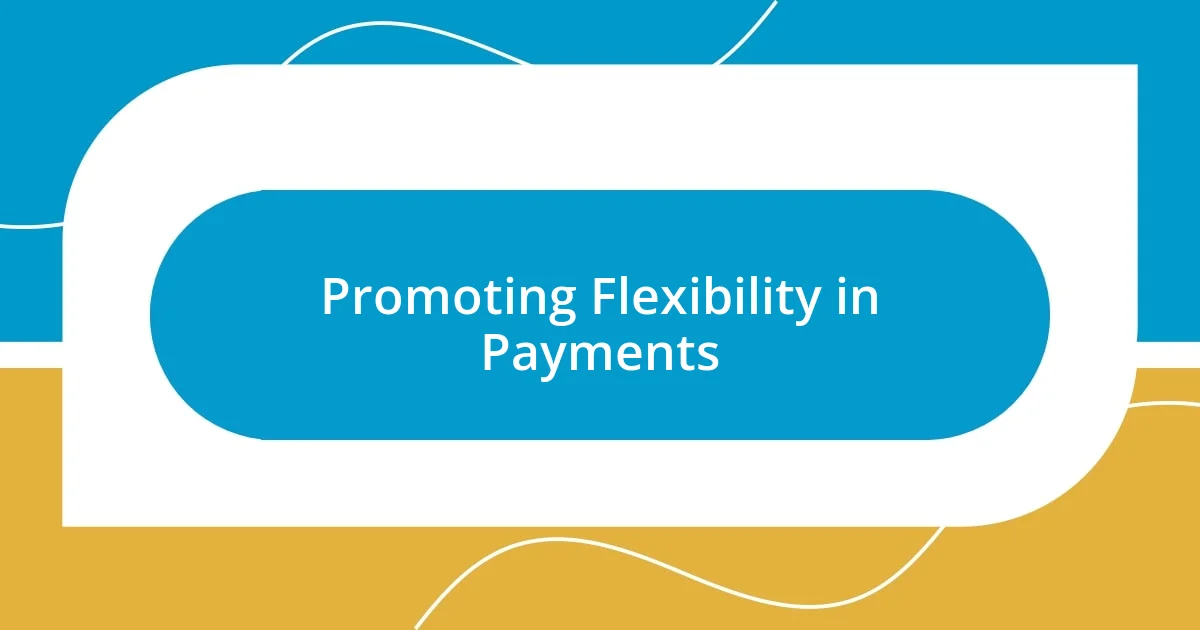
Promoting Flexibility in Payments
Promoting flexibility in payments transformed my perspective on customer interactions. I still recall the joy on a customer’s face when I mentioned we could adjust payment due dates to accommodate her financial situation. It was one of those moments that made me realize: when we offer flexibility, we’re not just facilitating transactions; we’re showing customers that we genuinely care about their needs.
Adopting a more personalized approach to payment options can create an emotional connection that’s often overlooked. I’ve experimented with allowing customers to choose their preferred billing frequency. During a casual conversation, a loyal customer mentioned how this option helped her manage her cash flow better, especially during the holidays. I couldn’t help but ask myself—how many more customers would feel the same relief and appreciation if we simply listened and adapted?
It’s this kind of flexibility that makes the shopping experience more enjoyable and less stressful. I once offered my clients a chance to pick between weekly and monthly payment plans, which led to an unexpected increase in repeat purchases. Reflecting on that success, I realized that providing a choice fosters a sense of empowerment in customers. It’s about giving them control over their finances while building trust and loyalty, and to me, that’s invaluable.
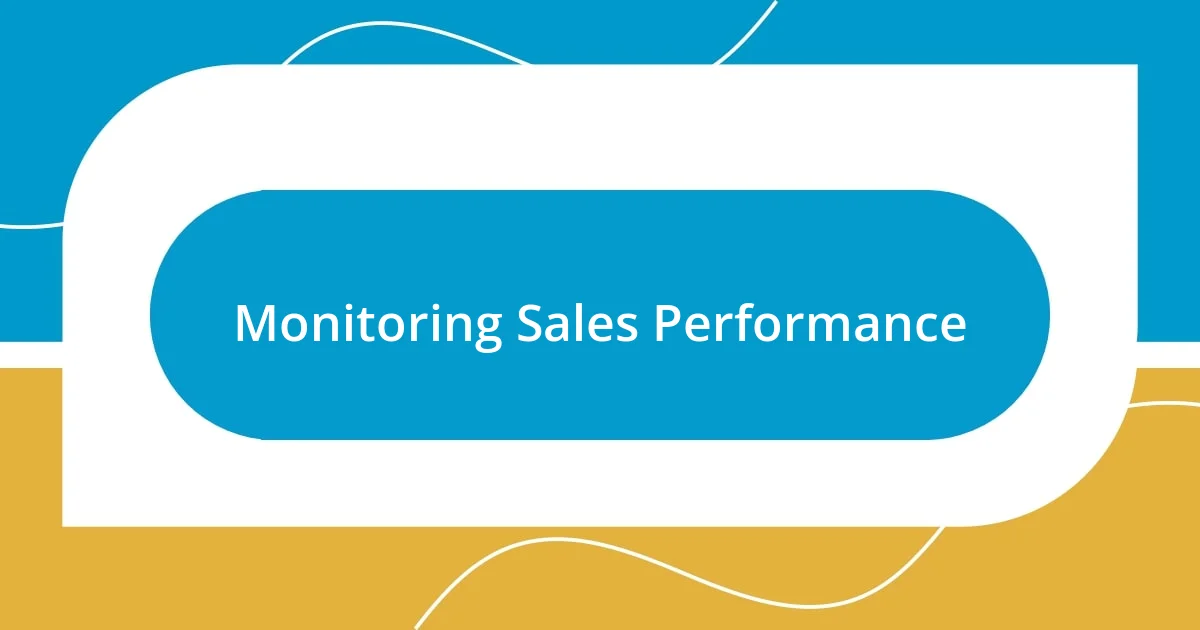
Monitoring Sales Performance
Monitoring sales performance became a game-changer for my business after I implemented diverse payment options. I’ll never forget the day I scrutinized the data and noticed a direct correlation between the payment plans I offered and the spikes in my sales figures. It made me think: was I possibly underestimating the power of payments? Those numbers spoke volumes; they told me that customers were not just buyers—they were engaging with my brand more meaningfully when they had choices.
As I dived deeper into my sales analytics, I started tracking customer feedback alongside performance metrics. I remember a review that caught my eye; a client praised our flexible payment options, stating they made a significant difference in her purchase decision. That moment struck me—there’s a wealth of qualitative data there that complements the numerical figures. It prompts the question: how often do we overlook what customers are truly saying behind the sales numbers?
I also initiated monthly reviews of sales performance, focusing not only on overall trends but on individual payment methods. I distinctly recall one month where buy-now-pay-later options exceeded my expectations by 30%. Analyzing the driving factors behind that surge was enlightening; it pushed me to rethink how I approach customer needs and fostered a proactive mindset. Instead of merely waiting for sales growth to occur, I realized I could actively influence it by staying attuned to what my customers valued most in their shopping experience.
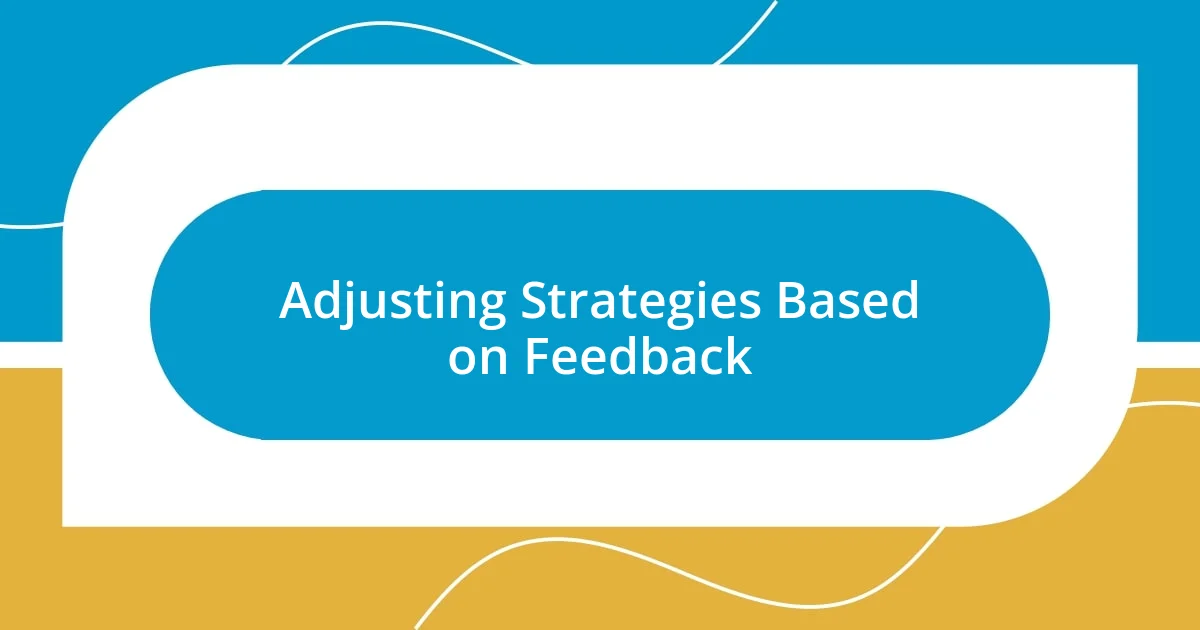
Adjusting Strategies Based on Feedback
Listening to customer feedback has profoundly shaped my approach to payment strategies. I vividly remember a conversation with a customer who shared how our previous credit terms didn’t align with her budget, which struck a chord with me. This insightful exchange prompted me to rethink our payment options and consider whether we were genuinely meeting the needs of all our clients.
Adjusting my strategies based on that feedback was an eye-opener. I’ll never forget the day I rolled out a new range of payment plans, tailored based on the specific input I’d gathered. Almost immediately, I began receiving positive responses from customers who felt more heard and valued. It’s fascinating how a simple change can reveal profound insights about customer expectations and create a ripple effect of loyalty.
I now make it a routine to conduct feedback sessions periodically, engaging directly with customers through surveys and informal chats. One particular outcome from these interactions that stood out was realizing that many shoppers preferred shorter payment terms due to their budgeting preferences. By adapting in real time, I’ve not only increased customer satisfaction but also positioned my business as one that genuinely listens. What more could a business ask for than a trusting relationship with its clients?












